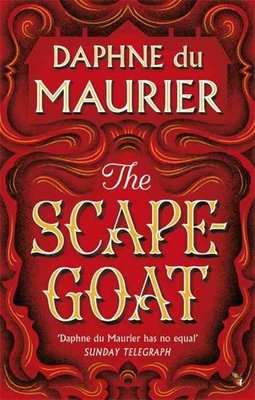
The ending of The Scapegoat was not what I was expecting. For instance, Jean, could quite easily be modelled on Robert – one of Daphne’s ancestors who ran away from his family and assumed a new name and identity. Both books are set around le Mans and feature du Maurier’s ancestral heritage in the glass trade. There are notable similarities between the two novels.

Interestingly, it was while Daphne du Maurier was researching her family history for a subsequent novel, The Glass Blowers, that she came up with the idea for The Scapegoat. This is something which the English John struggles to identify with, having come from a country that had not been invaded since 1066.

The book perfectly captures 1950s France, living in the shadow of German occupation and the resistance. The novel makes poignant observations on identity, deception, and what it’s like to live in someone’s shadow. These are strategically revealed and often delivered in a chillingly matter of fact tone. Jean’s family are not only dysfunctional but, in true Daphne du Maurier fashion, have some skeletons in the closet. I found myself smiling at some of the scenes, the misunderstandings and mistakes that John was inevitably going to make are delightfully humorous. The story is preposterous, and yet it’s believable. With the realisation that Jean has run away with all his belongings and identity, he falls into the strange, absurd trap of pretending to be Jean and taking over the narrative of his life.

The next day John wakes up in a hotel room with a hangover and a new life – one that he did not ask for, merely wished for. However, as John comes to learn, he is also dangerously indifferent. Whereas Jean appears confident, lively, and to have everything John doesn’t – a family, a large chateau, and a business. Single, 38, a professor with a reserved nature who has spent his life acquiring knowledge of the French language and history rather than meaningful connections. Whereas, from the offset, Jean’s smooth-talk wreaks of hidden agendas. John is instantly relatable and morally likeable. Shocked and bemused by their likeness, they sit and chat over a few drinks. They have nothing in common except they look one and the same. John, an Englishman on holiday in France, and Jean de Gué, a Frenchman returning from a business trip in Paris, cross paths at a railway station. The premise doesn’t take long to get off the ground. Fifty pages into The Scapegoat (1957) by Daphne du Maurier and I was hooked.


 0 kommentar(er)
0 kommentar(er)
